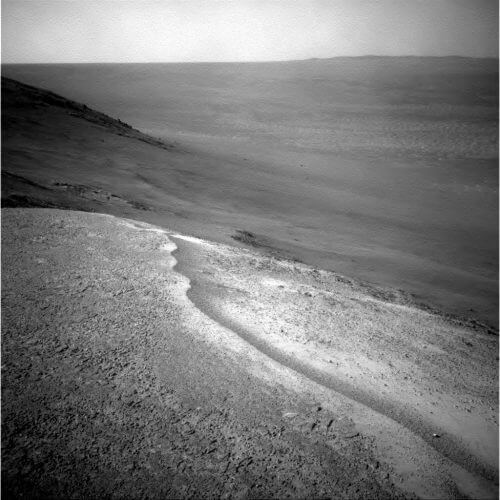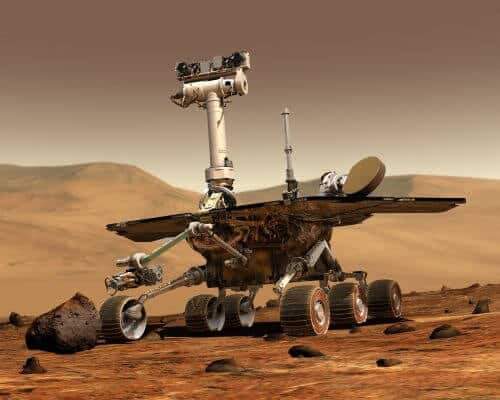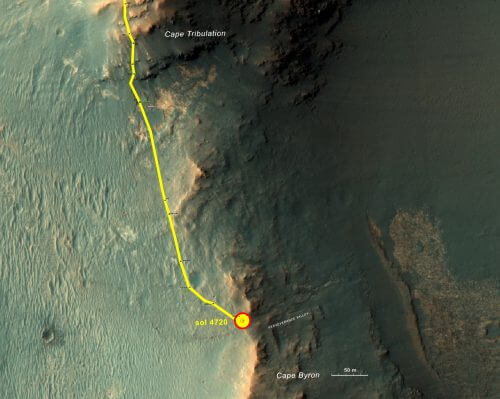The Opportunity rover, which landed on Mars 13 years ago, recently reached its next research destination - a channel in the rim of Endeavor Crater, which NASA researchers believe may have been formed by flowing water billions of years ago.

Opportunity, NASA's oldest Mars rover, arrived in early May at "Perseverance Valley", the name NASA gave to the channel on the inner slopes of the western rim of Endeavor Crater, which the rover has been exploring since 2011.
The channel will serve as the vehicle's research site for the next two years, during which it will investigate the history of the channel and how it was formed. One of the hypotheses of NASA researchers is that the channel was formed by flowing water billions of years ago, in the early period of the planet, when it had the right conditions for the existence of liquid water on the surface. Another hypothesis is that the channel was formed by a drift of earth and rocks, which were soaked in a little liquid water that acted as a lubricant; It is also possible that the channel was formed completely dry, by slow and gradual wind erosion.
"The science team is very excited to begin looking at this region up close and looking for clues that will help us distinguish between multiple hypotheses about how the valley formed," said Opportunity Project Scientist Matt Golombek of NASA's Jet Propulsion Laboratory (JPL).

Since the down of the channel is inclined at an angle of 15 to 17 degrees, it will be difficult for the vehicle to retrace its tracks once it wishes to go down it. Therefore, before entering the channel, Opportunity will photograph it from two distant points, to create a XNUMXD stereoscopic image of it. "The stereo photography will make it possible to create a topographic map that will help the team carefully plan travel routes down the valley, before starting the descent," said Opportunity Project Manager John Callas, from the Jet Propulsion Laboratory.
Opportunity is one of two identical rovers that NASA landed on Mars in 2004. Together with its twin brother Spirit, the vehicles were able to prove that in the early period of Mars there was liquid water on its surface, an important step in the search for an answer to the question of whether Mars was (or still is) suitable for life .
Although the original mission of the twin vehicles was planned to last only three months, both have extended lives. The first, Spirit, operated until 2010, then Lost contact with him After getting stuck in the sand. For Opportunity, luck shined even more than its twin, and it continues to move to this day with almost no faults in its various components. So far, Gamma 44.7 km across the Red Planet - more than any other rover on Mars or the Moon. One of the factors that helped him survive for so long was Mars himself - his spirits cleaned from time to time the dust and sand from the solar panels that supply the electricity to the car.

Opportunity landed and operates in an area known as the meridian plane, which is on the equator of Mars (in that area the The failed landing attempt of the European lander Schiaparelli last year). In 2011, the vehicle arrived at Endeavor Crater in the plain, which is 22 km in diameter, and since then it has been exploring various sites on the western edge of the crater.
Last month, the vehicle finished a two and a half year stay at "Cape Tribulation", which is located approximately one kilometer north of the new site, "Emek Hatamada". In order to quickly reach the gorge, Opportunity left last month from the rim of the crater, which includes many hills that are difficult to navigate through, traveled more quickly on the flat meridian plane that surrounds the crater, and on May 4 reached the top of the gorge.
See more on the subject on the science website:
